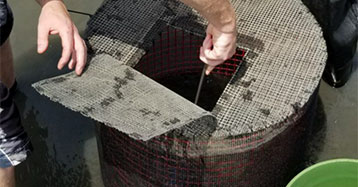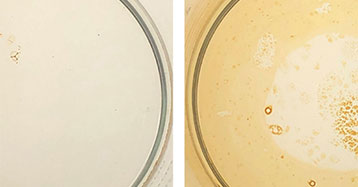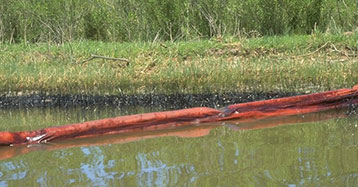Oil Spills
NCCOS conducts research to evaluate and predict the effects of chemical contaminants and other environmental stressors on coastal ecosystems. Estuarine environments can serve as sinks for many chemical contaminants bound to particulate matter as they move through urban and agricultural watersheds into rivers and are deposited in coastal areas where sedimentation rates are high. Headwater streams, such as tidal creeks in the coastal zone, are most susceptible to chemical runoff. These areas also serve as critical habitats supporting nursery grounds for estuarine fish and invertebrate species. These systems are vulnerable to many anthropogenic stressors, including land development, agriculture, urban and resort runoff, and point and nonpoint source inputs.
Chemical Spill Assessment
Chemical spills can occur without notice and pose immediate threats to coastal ecosystems. One challenge coastal managers face is the readiness of protocols and equipment at the actual time of a spill. NCCOS is developing tools that can be deployed in response to chemical spills and inform management decisions. Field-based mesocosms are useful tools for assessing toxicity at field locations. Also called in situ deployments or in situ bioassays, they can be particularly useful for assessing toxicity in the wake of oil or chemical spills in nearshore areas. NCCOS has constructed and tested a field-based mesocosm design and protocol to assess chemical effects on fish and shrimp in real-time. Other research is addressing the fate of spilled oil under different environmental conditions to inform fate and transport models used in spill response.
Oil Spill Pollution Fate and Effects Research in Estuarine Systems
Approximately 20,000 oil spills are reported in the U.S. each year. These events differ in oil type, extent of oiling, biological characteristics of the environment where the spill occurred, and the season of occurrence. Oil spills spread into coastal environments and can disrupt every part of the food web. NCCOS is working with NOAA’s Office of Response and Restoration to characterize the fate and effects of oil and oil spill mitigation products in the estuarine environment. Oil spill mitigation products include dispersants, shoreline cleaning agents, emulsifiers/solidifiers, and bioremediation products. We conduct testing of oil and oil spill mitigation products in the laboratory to establish toxicity thresholds and to determine effects on organism physiology, growth, and reproduction. These tests allow us to compare sensitivity among different species and life stages.
In addition, we are examining the influence of ultraviolet light, temperature, and salinity on oil toxicity and oil transformation dynamics. In our simulated salt marsh mesocosm testing facility we conduct ecosystem-level oil spill exposures to characterize trophic level interactions and determine oil degradation with and without mitigation products. In the mesocosms we are also testing various vegetation planting strategies for marsh restoration after an oil spill.





